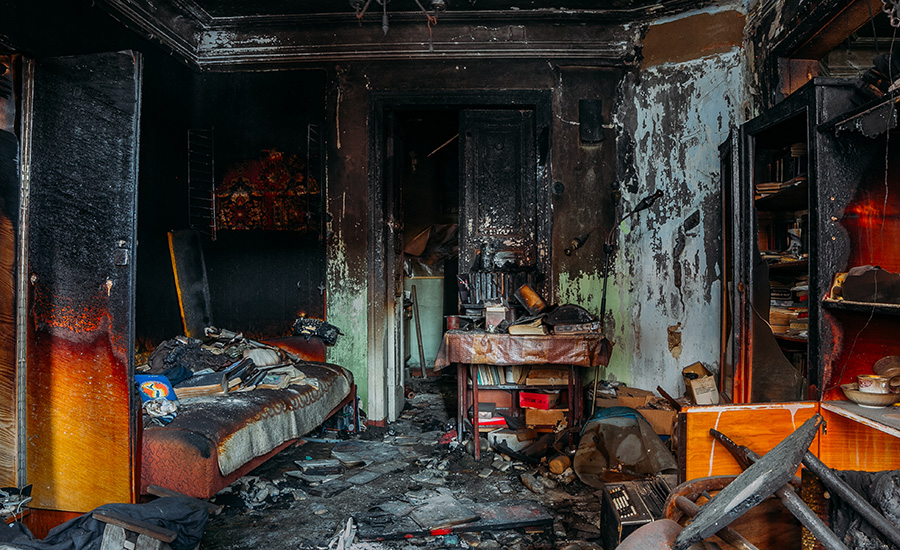A fire is sudden and can be scary for any business or homeowner. No matter how big or small, a fire can cause damage to a structure within minutes. Even if the fire itself is minimal and put out quickly, smoke damage can devastate the structure far beyond what the fire actually touches. Consider wildfire damage. Many homes and businesses are never even touched by flames, yet these structures are ruined just from smoke damage.
As quickly as a fire can cause serious damage to a building, it is imperative that you just as quickly address the damage. Any downtime will allow the damage to become increasingly worse — time is of the essence if you want to stop the damage from spreading.
Smoke Damage after a Fire
A professional fire damage restoration company is usually called immediately after a fire because cleanup needs to start before a soot chemical reaction occurs on all surfaces. After a fire is extinguished, soot residue begins to cover every surface. If not cleaned quickly, porous materials will become permanently discolored and unusable.
Fire and smoke will also cause damage to surfaces — within hours, objects will start to rust, wood floors and furniture will need to be refinished, and walls will turn yellow. But, if the acidic soot and smoke damage can be cleared out quickly, you can avoid staining, discoloration, and permanent odor damage.
If you wait too long, you will be throwing away items destroyed by soot and smoke and replacing materials that could have been repaired if harmful contaminants and VOCs had been removed quickly. Time also becomes important when you are working to create a safe environment for restoration specialists to begin work.
It is imperative that the first contractors who begin restoration work at the site of the fire protect themselves from breathing in harmful smoke, soot, and VOCs. The great news is that new technology creates a safer environment for your crew while at the same time lightening your workload.
Start Damage Restoration as Quickly as Possible
One of the easiest ways to get to work as quickly as possible is to use a hydroxyl generator. These generators produce oxidizing gasses that break apart odor molecules and eliminate a very broad range of odors and VOCs. They can begin running immediately after the fire to help knock out smoke damage, keeping smoke and soot from greater damage to the structure, and making the environment safer for workers (although proper PPE should always be worn, of course).
Using a hydroxyl generator is as simple as plugging it in, attaching it to the necessary air mover to disburse the hydroxyl radicals, and letting the machine do its job. Hydroxyl generators are safe to run in occupied spaces — this means that crews can get in and start soot removal even faster, helping shield the structure from any further damage after the fire.
Crews can be working the entire time while the generators are working alongside the crew — doing their job to keep the soot and smoke from destroying surfaces, structures, and items in the fire.
Sealing the Fire Damage
Sealing is a popular protocol in the smoke odor removal process; however, it becomes unnecessary when using hydroxyl generators properly. The hydroxyl generator will eradicate all fire odors, so sealers only need to be used to address the visual aspect of fire damage — i.e., to make things look better.
It’s important to understand that hydroxyl generators stand alone when it comes to odor removal. There is no need for additional chemicals, oils, masking agents, charcoal filters, sealers, and so on. Hydroxyl radicals have the ability to get into the smallest nooks, crannies, and densely porous materials to eliminate odor.
With items that have heavy smoke exposure, you can put them in storage containers or within plastic sheeting and blast them with hydroxyl radicals. You can also inject hydroxyls into hard-to-reach areas and crevices, like wall cavities, school lockers, etc.

